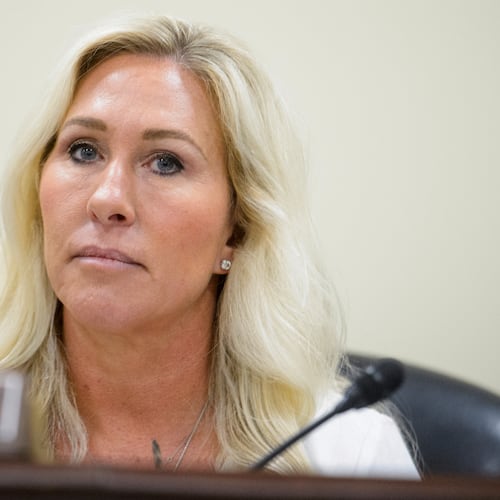Population numbers released Thursday show booming growth and increasing diversity in Georgia’s suburbs, creating both problems and possibilities for the Republicans who will dominate the state’s redistricting process this fall.
State legislators are required to redraw congressional and state districts to ensure they contain equal populations based on U.S. census figures collected every 10 years. That process is run by the majority party, and in the Georgia General Assembly in 2021, that’s the GOP.
Georgia’s fastest-expanding congressional district is held by Democratic U.S. Rep. Carolyn Bourdeaux, creating an opportunity for Republicans to divide the area in Gwinnett and Forsyth counties to try to gain a seat.
But population increases will also create obstacles for Republicans in the state House and Senate who represent areas that have changed the most over the past decade, particularly on the outskirts of the core Atlanta region.
The fastest-growing state House and Senate districts are currently held by Republicans, especially in districts in Cherokee and Forsyth counties north of Atlanta.
Meanwhile, many rural areas represented by Republicans have stagnated, creating the possibility they will see their representation in the General Assembly reduced because they lack enough population to justify their current numbers.
Still, much of the state’s political power rests in the hands of rural Republicans — and is expected to stay that way, said Kerwin Swint, a political scientist at Kennesaw State University.
“They’ll do what they can, given the cards that they’re dealt,” Swint said. “The power base for the Republicans is outside metro Atlanta, and they’re going to do whatever they can to hold onto that power, obviously. But I think they’ve got to pick and choose their battles,”
The release of the numbers begins a monthsong, brutally partisan process to determine legislative and congressional districts, which will be mapped out during a special session expected in October or November. The release of official numbers was dramatically delayed by the coronavirus pandemic and the amount of time census workers spent trying to count the country’s residents.
Hundreds of thousands of Georgia voters will be moved to new districts in advance of next year’s elections, when every congressional and legislative seat will be on the ballot.
Republicans will draw maps that attempt to protect their majorities for the next 10 years and forestall further gains by Democrats. Democrats have flipped several seats from Republican control in recent elections, including taking 11 state House seats in 2018 but just two last year.
“The fact of the matter is, drawing the lines is a difficult task,” said state Senate President Pro Tem Butch Miller, a Republican from Gainesville. “You will not make everyone happy.”
Some representatives could be forced into races against members of their own party.
Democrats fear that the districts of Bourdeaux and U.S. Rep. Lucy McBath could be shaped in a way that would make electing a Republican more likely and increase the GOP’s 8-6 congressional delegation majority.
The 7th Congressional District represented by Bourdeaux must be reduced by 94,000 residents to ensure even representation. McBath’s 6th District, which includes parts of Cobb, DeKalb and Fulton counties, is about the right size, with 765,000 residents.
Senate Minority Leader Gloria Butler said she hopes Republicans won’t create unfair political maps in a state that’s closely divided between the two political parties.
“I’m concerned about the whole process. They can do whatever they want as the majority party,” said Butler, a Democrat from Stone Mountain. “I can only hope they will do the right thing.”
On the state level, Republican-held state House districts grew at a slightly faster rate than those represented by Democrats — and are becoming increasingly racially diverse.
For example, of the 6.1 million residents in the 103 state House districts represented by Republicans, nearly 35% of those Georgians identify as nonwhite. In 2010, nearly 30% of the 5.5 million Georgians living in those districts were not white.
Population grew at a higher rate for state Senate seats held by Democratic lawmakers, but Republican-represented Senate districts also saw an increase of nonwhite residents.
Of the 6.5 million residents in Georgia’s 34 districts held by Republican senators, 36% are nonwhite. That’s an increase of about 33% from 2010 to 2020.
Still, Democratic-represented state Senate and House districts remain much more diverse than those of their Republican colleagues. Nearly 72% of the residents in state Senate districts represented by Democrats are not white, while about 70% of residents in Democratic-held state House districts identify as nonwhite.
Swint said he expects Republican leadership to find ways to carve out territories that are safe for their incumbents, just as Democrats did when they were in charge of redistricting before they lost control of the General Assembly in the 2000s.
“They’re going to crunch the numbers, look at the math and see what makes the most sense to focus on,” he said. “They can’t afford to ignore metro Atlanta, obviously, but their power base will probably likely stay outside the metro area. That’s just the way it lines up.”
State House seats with most population growth
Rep. Todd Jones, R-South Forsyth, 45%
Rep. Wes Cantrell, R-Woodstock, 45%
Rep. Bill Hitchens, R-Rincon, 45%
Rep. Sheri Gilligan, R-Cumming, 37%
Rep. Barry Fleming, R-Harlem, 33%
Rep. El-Mahdi Holly, D-Stockbridge, 33%
Rep. Ron Stephens, R-Savannah, 33%
Rep. Chuck Efstration, R-Dacula, 31%
Rep. Lauren McDonald, R-Cumming, 31%
Rep. Betsy Holland, D-Atlanta, 30%
Source: U.S. census
New Georgia district sizes
14 congressional districts: 765,136 residents each
56 state Senate districts: 191,284 residents each
180 state House seats: 59,511 residents each
Georgia population: 10,711,908
Source: House Budget and Research Office
Keep Reading
The Latest
Featured




